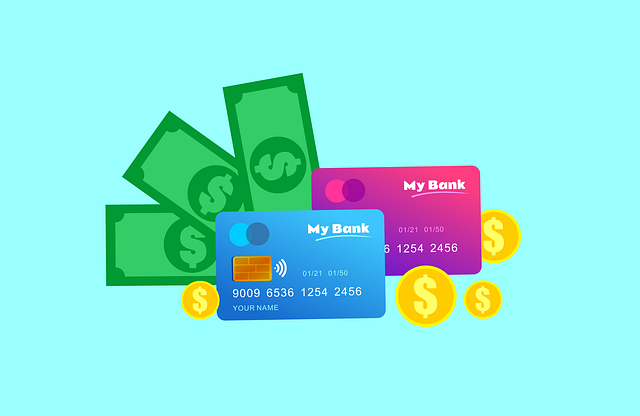Loan consolidation streamlines repayment by merging multiple private student loans into one with lower interest rates and more manageable terms. It offers benefits like reduced monthly payments, freed cash flow, and lower overall interest expenses over time. To start, assess loan details (amounts, rates, terms) from all lenders. Explore options like Direct Federal Consolidation Loans or private services from banks/credit unions, comparing interest rates, fees, and repayment plans. Good credit scores, stable income, and a clear repayment strategy enhance successful management of a consolidated loan. This process simplifies financial management, saves money, and frees up funds for other goals, making it a powerful tool to gain control over student debt.
Looking to simplify your finances and manage your private student loans more effectively? Loan consolidation could be the answer. This comprehensive guide explores the benefits of combining your private student loans, helping you save money and streamline repayment. We’ll walk you through understanding loan consolidation, evaluating your eligibility, exploring different consolidation options, and the step-by-step process involved. By the end, you’ll be armed with knowledge to make informed decisions about your financial future.
- Understanding Loan Consolidation: What It Entails and Benefits
- Evaluating Your Loan Portfolio for Consolidation Eligibility
- Exploring Types of Private Student Loan Consolidation Options
- The Process of Combining Loans: Step-by-Step Guide
- Long-Term Savings and Improved Financial Management
Understanding Loan Consolidation: What It Entails and Benefits

Loan consolidation is a strategic process that involves combining multiple loans into one single loan with a potentially lower interest rate and more manageable terms. This approach simplifies repayment by eliminating the need to track several payments across different lenders. For private student loan borrowers, consolidation can be a powerful tool to streamline financial obligations.
By consolidating your loans, you may enjoy reduced monthly payment amounts, which can free up cash flow for other expenses or savings. Additionally, a longer repayment period could result in lower overall interest payments over the life of the loan. There are various loan consolidation options available, including direct consolidation loans from the Federal Government, private loan consolidation services, and refi programs that allow you to refinance your private loans with a bank or credit union. Each option has its unique features and eligibility criteria, so it’s crucial to research and compare to find the best fit for your financial situation.
Evaluating Your Loan Portfolio for Consolidation Eligibility

Evaluating your loan portfolio is a crucial step in determining if loan consolidation is the right move for simplifying your finances. Start by gathering information about all your existing private student loans, including the lender, interest rates, and repayment terms. Next, assess the potential benefits of consolidation. Loan consolidation options can help reduce your monthly payments, lower your overall interest expenses, and streamline your repayment process. If you have multiple loans with varying interest rates and maturities, consolidating them into a single loan with a fixed interest rate could be advantageous.
Consider factors like your creditworthiness, current income, and future financial goals when deciding. Good credit scores can lead to better consolidation terms, while stable employment and a clear repayment plan increase your chances of successfully managing a consolidated loan. By carefully evaluating your loan portfolio, you’ll gain insights into which consolidation options align best with your unique financial situation.
Exploring Types of Private Student Loan Consolidation Options

When considering simplifying your finances by combining private student loans, exploring loan consolidation options is a strategic step. These options allow borrowers to bundle multiple loans into one, often with lower interest rates and more manageable repayment terms. This can significantly reduce monthly payments and the overall cost of borrowing.
There are several types of private student loan consolidation available, each with its own set of benefits and requirements. Direct Consolidation Loans, offered by the Federal Government, offer fixed rates and simplified payment processes. Private lenders also provide consolidation plans tailored to individual needs, sometimes including features like income-driven repayment or interest-only periods. Understanding these options is crucial in making an informed decision that aligns with your financial goals and minimizes long-term debt.
The Process of Combining Loans: Step-by-Step Guide

Combining private student loans can simplify your repayment process by consolidating multiple loans into a single loan with potentially lower interest rates and more manageable payments. Here’s a step-by-step guide to help you navigate this process:
1. Assess Your Loans: Start by gathering information on all your existing private student loans. Note down the loan amounts, interest rates, repayment terms, and lenders. This data will be crucial for making informed decisions later.
2. Explore Loan Consolidation Options: Research various loan consolidation programs available to you. Direct Loan Consolidation from the federal government is a popular option that can lower your interest rate and extend your repayment term. Alternatively, private loan consolidators offer similar services but with varying terms and conditions. Compare these options based on interest rates, fees, and repayment plans.
Long-Term Savings and Improved Financial Management

Combining private student loans through loan consolidation options can offer long-term savings and significant improvements in financial management. By consolidating multiple loans into a single, often lower-interest loan, borrowers reduce the administrative burden of managing several lenders. This simplifies repayment by making it easier to track due dates, adjust payment amounts, and take advantage of potential interest rate reductions.
Moreover, loan consolidation can lead to substantial savings on interest payments over time. With a consolidated loan, you’ll have one fixed monthly payment, allowing for better budgeting and potentially lower overall debt. This strategic move empowers individuals to gain control of their finances, enabling them to allocate funds more effectively towards other important financial goals or savings initiatives.







